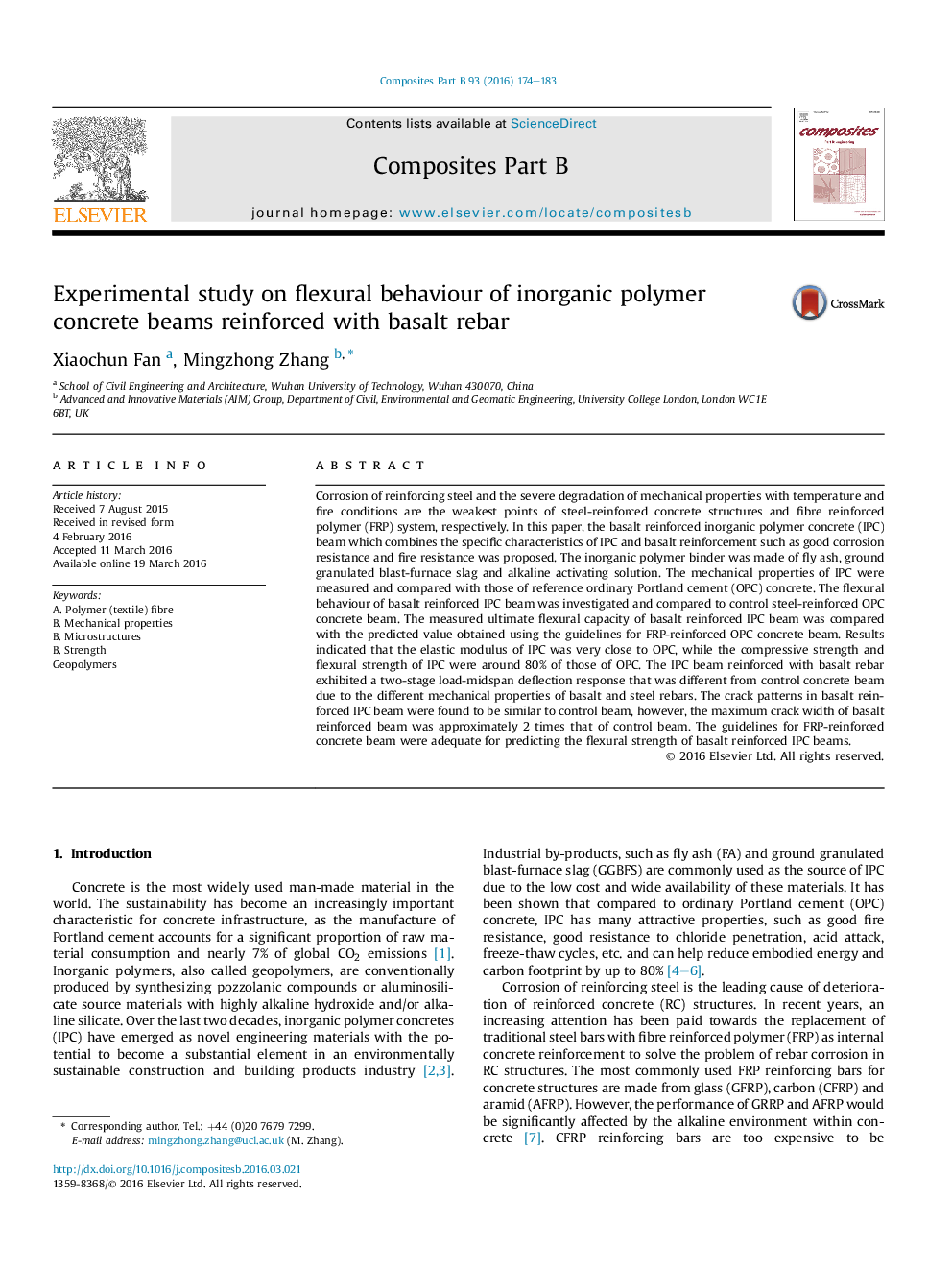| Article ID | Journal | Published Year | Pages | File Type |
|---|---|---|---|---|
| 816852 | Composites Part B: Engineering | 2016 | 10 Pages |
Corrosion of reinforcing steel and the severe degradation of mechanical properties with temperature and fire conditions are the weakest points of steel-reinforced concrete structures and fibre reinforced polymer (FRP) system, respectively. In this paper, the basalt reinforced inorganic polymer concrete (IPC) beam which combines the specific characteristics of IPC and basalt reinforcement such as good corrosion resistance and fire resistance was proposed. The inorganic polymer binder was made of fly ash, ground granulated blast-furnace slag and alkaline activating solution. The mechanical properties of IPC were measured and compared with those of reference ordinary Portland cement (OPC) concrete. The flexural behaviour of basalt reinforced IPC beam was investigated and compared to control steel-reinforced OPC concrete beam. The measured ultimate flexural capacity of basalt reinforced IPC beam was compared with the predicted value obtained using the guidelines for FRP-reinforced OPC concrete beam. Results indicated that the elastic modulus of IPC was very close to OPC, while the compressive strength and flexural strength of IPC were around 80% of those of OPC. The IPC beam reinforced with basalt rebar exhibited a two-stage load-midspan deflection response that was different from control concrete beam due to the different mechanical properties of basalt and steel rebars. The crack patterns in basalt reinforced IPC beam were found to be similar to control beam, however, the maximum crack width of basalt reinforced beam was approximately 2 times that of control beam. The guidelines for FRP-reinforced concrete beam were adequate for predicting the flexural strength of basalt reinforced IPC beams.
